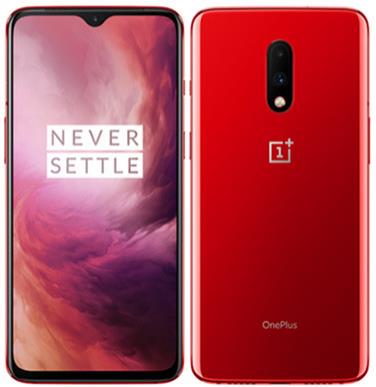

#ONEPLUS 7 PRO#
If OnePlus has managed to implement this without major battery regressions, then I think it represents a major selling point of the phone and the OnePlus 7 Pro should easily distinguish itself from other 2019 devices just on this one feature. In my hands-on with the device, the 90Hz was immediately visible and vastly improved the fluidity of the phone.

Interestingly, OnePlus offers the option to also drive the display at 60Hz, which is quite curious if the 90Hz mode indeed were to have a battery impact. Depending on how OnePlus, Qualcomm and Samsung (Display DDIC) were able to implement this, it might have notable impact on battery life of the phone, similar to what we’ve seen on Huawei’s Mate 20 Pro.
#ONEPLUS 7 PLUS#
Thus the One Plus 7 Pro must come with dual-MIPI display interfaces. This is extremely interesting as 1440p60 is the limit that a single MIPI interface with DSC (Display stream compression) can drive.

This isn’t the first 90Hz phone or even 90Hz OLED phone for that matter, however it is the first 1440p 90Hz device out there. The one thing that really distinguishes the OnePlus 7 Pro from the Samsung competition though is the inclusion of a 90Hz refresh rate. OnePlus promises the display will reach up to 800nits brightness at 100% APL, and has a new ultra-low brightness mode which goes down to only 0.27nits, far below any other smartphone on the market. Here we see a 6.67” AMOLED display with a 3120 x 1440 resolution and a resulting 19.5:9 aspect ratio. The new panel seemingly uses the same generation technology as employed by Samsung in the Galaxy S10. For the new ultra-premium phone, OnePlus did not hold back in terms sourcing the very best. The OnePlus 7 Pro is characterised and distinguishes itself by one thing: its display. The OnePlus 7 Pro: A 1440p, 90Hz Fullscreen Display OnePlus continues to iterate on its RAM-Boost feature: Pre-loading frequently used application data files into DRAM in order to accelerate launch speeds. The new storage solution doubles the interface bandwidth, increasing the theoretical maximum throughput from 800MB/s to 1600MB/s as well as increasing the peak IOPS, which hopefully should be something that’s noticed in application launch speeds. Although Samsung’s Galaxy Fold was the first to be announced with the new storage generation, OnePlus will seemingly beat Samsung towards actually shipping phones. Both devices are the very first commercial devices to come with UFS 3.0 NAND storage. The OnePlus 7 comes in 6 and 8GB RAM variants, while the OnePlus 7 Pro comes in 8GB and 12GB variations. Fair to say, the chip impressed a lot, and we expect to provide the new OnePlus 7 phones with excellent experiences. We’ve extensively reviewed the chip in our review of the Galaxy S10 and dwelled deep into its characteristics. Naturally, being 2019 devices, we find both the new OnePlus 7 as well as One Plus 7 Pro using Qualcomm’s newest Snapdragon 855 SoC. Going over the core specifications of both new phones: OnePlus 7 Seriesĭual Band GPS (L1+L5), Dual Band Galileo (E1+E5a) While the OnePlus 7 is a generational hardware refresh, the new OnePlus 7 Pro represents a new product tier for the company and really ups the ante in terms of offering a top-of-the-line flagship device. Today, OnePlus announces the new OnePlus 7 as well as the OnePlus 7 Pro. Both the OnePlus 6 and 6T refresh ended up as among the best devices in 2018. The phone was a major iteration for the company and the new design language as well as industrial design really stepped things up. This upwards shift in quality has been especially visible last year in the OnePlus 6. Although most users will view the company’s smartphones as products focusing on delivering value, the truth is that over the years as OnePlus iterated with every new generation, it moved up in terms of both product quality as well as pricing. Over the years we’ve seen the company’s products have a large impact on the industry and particularly with the enthusiast community, delivering extremely solid products at extremely competitive price-points. We’ve been with OnePlus since the One back in 2014.


 0 kommentar(er)
0 kommentar(er)
